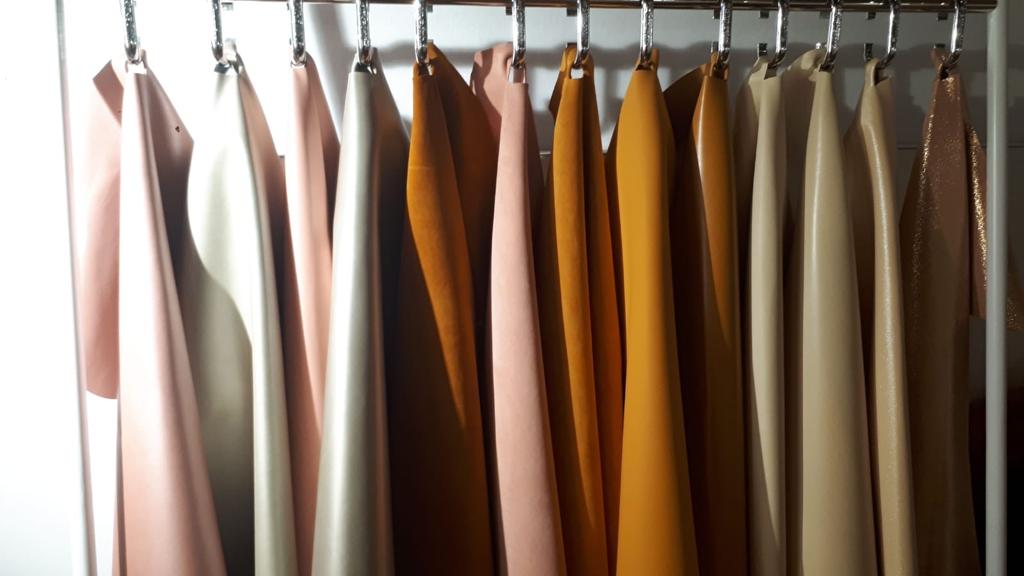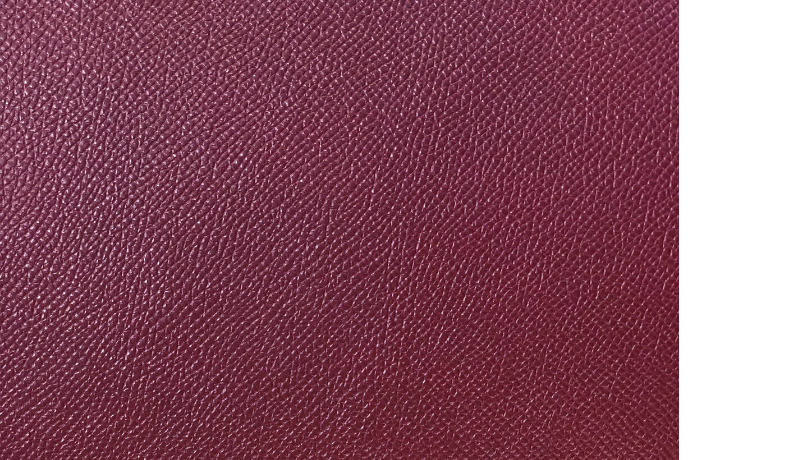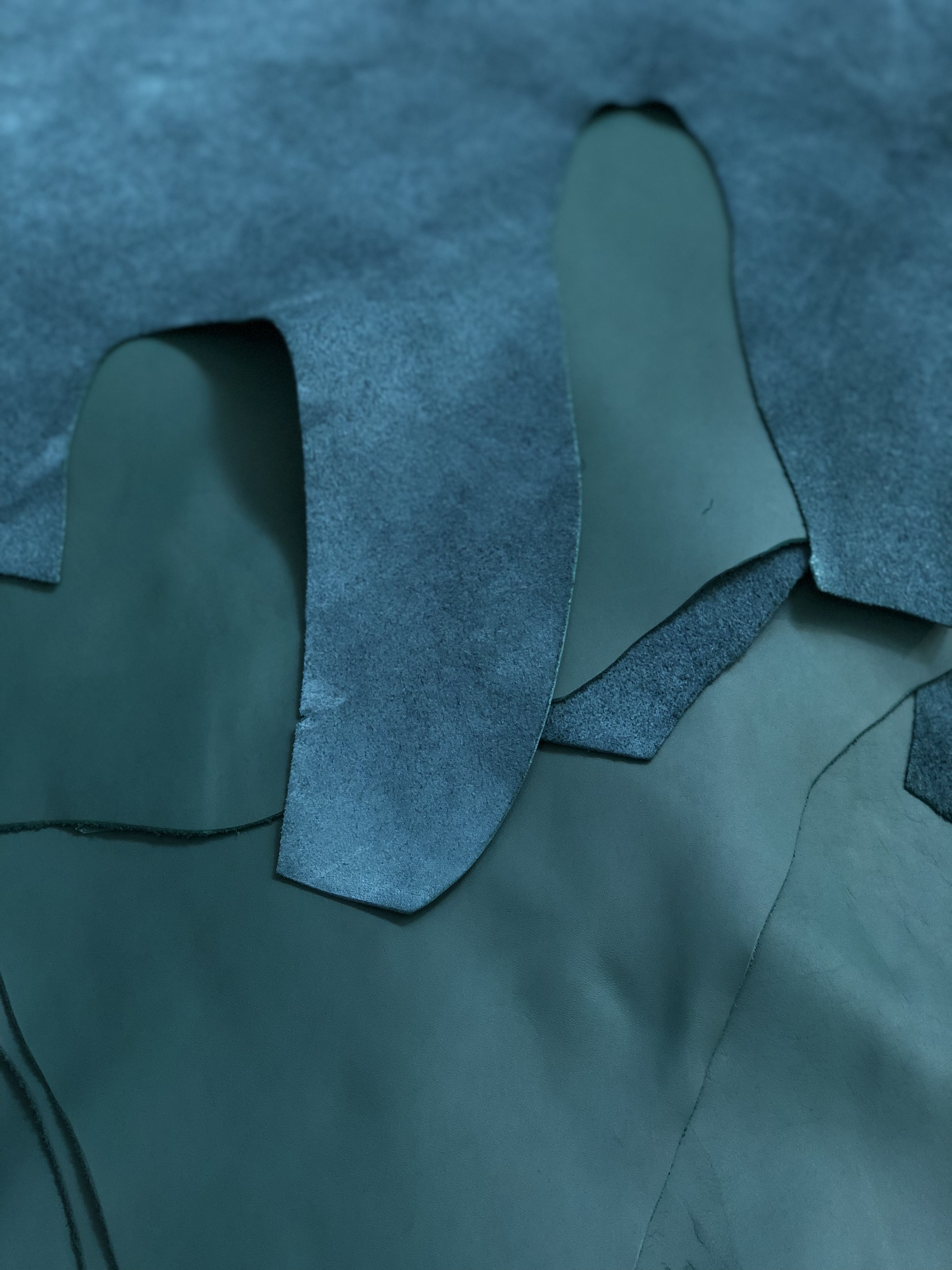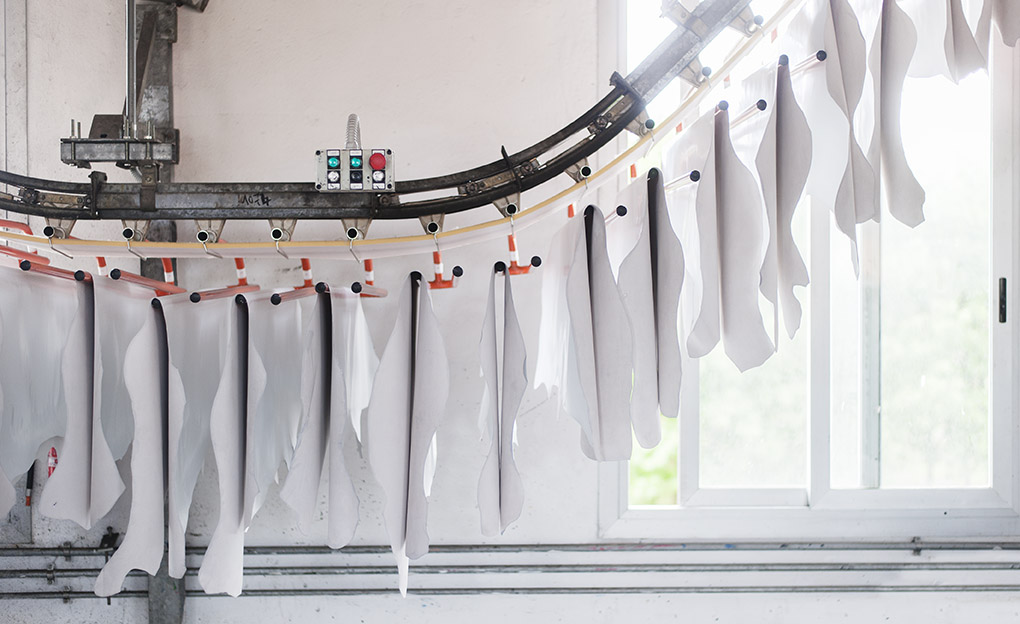Finishing, you may have guessed, is the last stage of leather processing and it defines the leather’s organoleptic dimension. Our tannery is heavily investing on this phase at the moment, especially in terms of research and sustainable innovation.
Bottalata, palissonata, smerigliata: it’s easy to say “leather”! This extraordinary material goes through many stages of processing before taking its final form. Some characteristics such as softness, mechanical strength and color are established during tanning, retanning and dyeing. However, it is during the finishing that the look and function of the leather is defined, its surface is protected and finessed. This makes it a delicate and important phase, where we decided to invest in order to develop an increasingly eco-sustainable production.
Finishing can be mechanical and chemical. One process does not exclude the other, and today many leathers are finished both mechanically and chemically. During finishing, polymeric resins, caseins, waxes, pigments and dyes are applied to the grain of the leather in order to impart the desired color, give brilliance, texture and other organoleptic, physical and commercial characteristics. Thanks to this combination of techniques, it is possible to obtain leathers with very specific effects: an approach necessary to keep up with fashion trends and the creativity of designers. And, in certain cases, anticipate them.
The mechanical finishing of leather
The mechanical finishing includes a number of operations carried out by specific machines. Among these, there are:
- polishing for a shiny effect;
- plating for a flat and smooth effect;
- pressing to engrave a print bearing a pattern or design;
- fulling for a “blurred” effect that makes the grain of the leather more visible;
- buffing for a suede (flesh side) or nubuck (grain side) effect.
The chemical finishing of the leather
With the chemical finishing the leather is covered with one or more layers of synthetic or natural material. These mixtures may contain dyes, opacifiers or polishers to vary the final result. The most commonly used method is spray finishing.
This is done with guns that work like airbrushes, using air as a fluid for the transport and diffusion of the chemical product. That’s exactly what we’re working on. We’ve partnered up with our supplier and we are testing a transformation of the fluid from air to nitrogen. The aim is to exploit the chemical characteristics of this element in order to optimize the use of chemical products and reduce waste, time and emissions.
Moving forward, our aim is to produce high-quality leathers with a sustainable approach.



